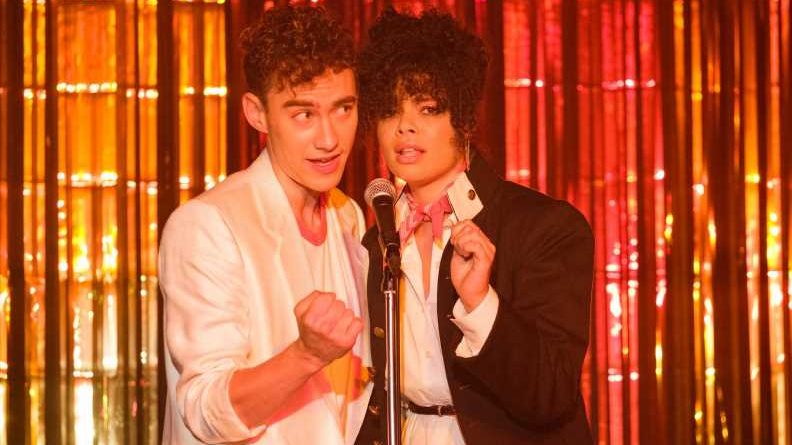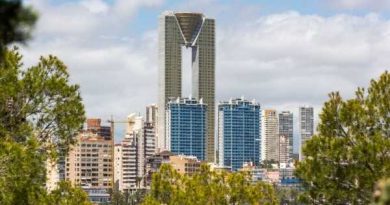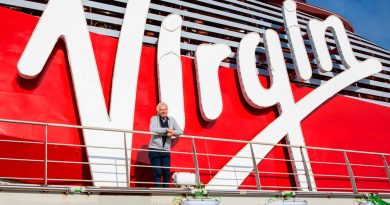On Location: How 'It's a Sin' Recreated Iconic '80s London Nightclubs
While there have been stories about the AIDS crisis centered around New York and San Francisco on screen, far fewer have been set in London. Now, It’s a Sin, a five-part HBO Max series created by Russell T. Davies, traces the lives of a tight knit group young gay men and their friends as they navigate London during the onset of the AIDS epidemic. Starting in 1981 and ending a decade later, the show takes us to places of joy and self discovery, like smoke-filled pubs, nightclub dance floors, and crowded house parties at the gang’s shared flat, the Pink Palace, as well as scenes that encapsulate the terror of that era—the die-ins and the hospitals. We spoke to Peter Hoar, who directed all five episodes, about what it took to recreate 1980s London, the importance of spotlighting joy throughout the show, and the nightclub memento he wishes he could have kept.
Manchester was transformed into 1980s London for the show. How did you pull that off?
With respect to [the U.K.] in the 1980s, things didn’t look their best then. So we were looking for well-lived-in places. For the Pink Palace, for example, we needed to find something that looked like London in 1981, and was also the sort of place that students could afford on very low wages. We managed to find this exterior along a tiny road just off of the main street in Manchester that looked like it had not been touched in years; the shops had been boarded up and it has a wonderful record store, Clampdown Records, that we used and put 1980s LPs in the window. But we really needed things to look a bit, you know, unloved. This [period] was pre-gentrification in [parts of] London, so we had to find areas of Manchester that gave us that feel.
Was there a particular sense of being young in London that you sought to capture through the locations?
The show is much more about life than it is about death, and so the colors were very important to us, especially the colors that the individuals bring with them when you see them, say, walking up the street towards their favorite bar. The area where we found the pub [that we filmed at] was very industrial, sort of featureless really, but by setting the characters against that it just brought all the life to it. That’s the thing I was trying to set up: A world that was all about people, community, and individuals, because ultimately the gay scene back then took place in parts of London that no one else wanted.
We also filmed a whole sequence through Manchester where Ritchie is holding court and telling everybody that he doesn’t believe in AIDS and HIV as he goes from place to place. [That scene] is all about him. He is like the Pied Piper. So we gave it a bit of a 42nd Street or West Side Story feel. It’s a little bit heightened because we were trying to show that what mattered most was the people rather than the place.
That scene really reminded me of sitting in bars at the start of last year, listening to people say we didn’t need to worry about COVID.
We didn’t know any of this was going to happen when we were shooting, and it just seems to have got more and more comparable since then. We were worried about broadcasting a show about a deadly virus during another deadly virus, but it feels like sometimes those comparisons are important because if people realize that we’ve done this before, and we have made those same mistakes before, then maybe they will think twice about joining the bandwagon that says, “Oh, it’s nothing, you don’t have to worry about it. It’s all okay.”
The show often portrays the joy and freedom of queer nightlife spaces, including London’s legendary Heaven nightclub. How did you thread the needle between capturing the celebratory nature of a dance floor and the overshadowing fear of AIDS?
I was too young for Heaven in the ‘80s, but I did go in the ’90s, and it has gone through many transformations since then. But I think it is essentially the same place: this underground, dark, yet brightly colored, sexy, smoky environment under the arches. We were initially obsessed with finding something in Manchester that looked like it, but I don’t think I needed to worry, because actually what mattered was the lights and the people. We filled it with smoke and had the lasers and the beautiful Heaven sign—I wish I could have taken that home. But one of the things that really struck me were the [extras] that we filled the space with, who were all age appropriate and just enjoying themselves. Looking around you’d think, these are the people that this would have affected, these are the people who would have died. I think that affected me a lot.
Nightclubs can be such important community spaces, too, especially in moments of crisis.
After that episode came out [in the U.K.] so many people would say to me, “Oh my god, I wish I could go into a club. I wish I could go into a bar. I wish I could hold people and pick people up.” That’s been missing for so long, and some of these bars and clubs are the only places where you can really be yourself.
What location meant the most to you, then?
I think the Pink Palace was the key to it all. The interior was a set that we built, but it fooled a lot of people because we inserted all these images in the windows so it looked like the 1980s London skyline. From the very first party in the first episode, when Colin shows up in his suit and does a silly dance, it just felt so authentic. I remember looking about the place and thinking, I’ve been to this house party. We all have. To show up at a party like that can feel so viscerally life affirming when you’re 18 years old. These characters had only just discovered who they really were, and discovered their own sexuality, and they wanted to run with it. That time is so much about finding a network of safe spaces, and they were all brought together by their community. They were unified.
Source: Read Full Article



